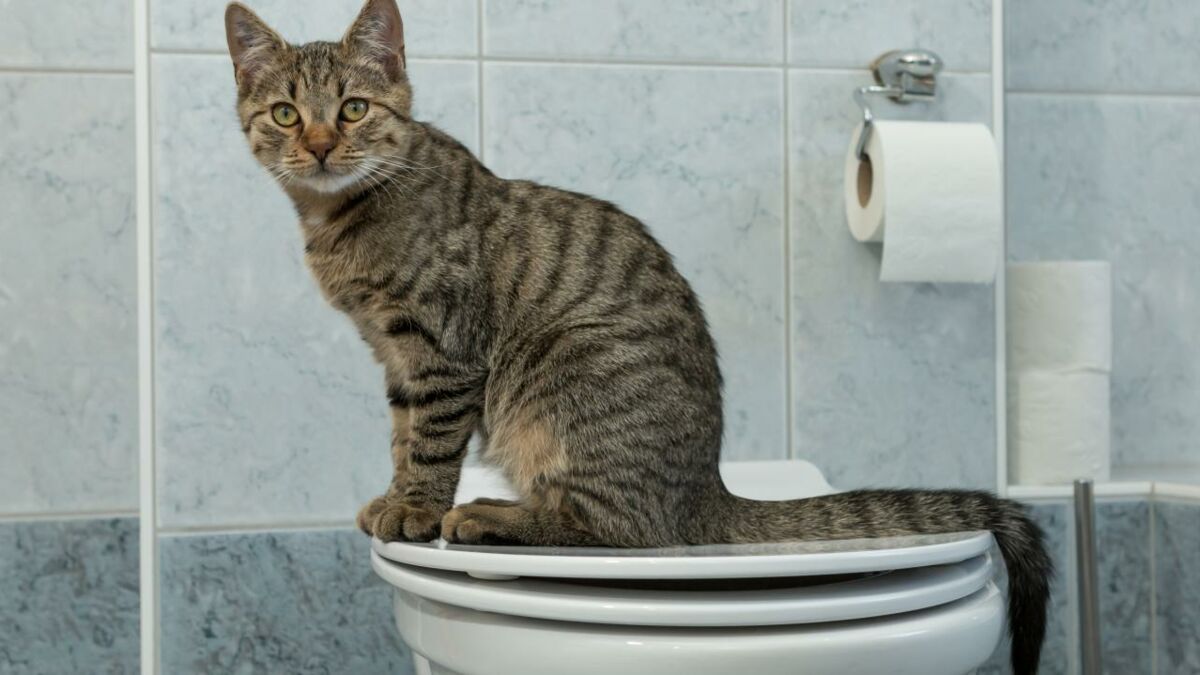Never Flush Cat Poop Down Your Toilet - Safeguard Your Plumbing Infrastructure
Never Flush Cat Poop Down Your Toilet - Safeguard Your Plumbing Infrastructure
Blog Article
On this page down the page you might get a lot of incredibly good news regarding Don’t flush cat feces down the toilet.

Introduction
As feline owners, it's vital to be mindful of just how we throw away our feline pals' waste. While it might seem hassle-free to flush pet cat poop down the toilet, this technique can have harmful effects for both the environment and human health and wellness.
Alternatives to Flushing
Fortunately, there are much safer and a lot more responsible ways to throw away cat poop. Think about the complying with choices:
1. Scoop and Dispose in Trash
The most common approach of dealing with pet cat poop is to scoop it right into a naturally degradable bag and throw it in the trash. Make sure to make use of a dedicated trash inside story and get rid of the waste without delay.
2. Usage Biodegradable Litter
Select naturally degradable cat clutter made from materials such as corn or wheat. These clutters are environmentally friendly and can be securely disposed of in the trash.
3. Bury in the Yard
If you have a lawn, take into consideration hiding pet cat waste in a marked location away from vegetable gardens and water resources. Be sure to dig deep enough to prevent contamination of groundwater.
4. Install a Pet Waste Disposal System
Invest in a pet garbage disposal system particularly designed for pet cat waste. These systems utilize enzymes to break down the waste, reducing smell and environmental influence.
Health and wellness Risks
In addition to ecological concerns, purging cat waste can likewise pose health and wellness threats to people. Pet cat feces may consist of Toxoplasma gondii, a bloodsucker that can cause toxoplasmosis-- a possibly extreme illness, especially for expectant women and individuals with weakened body immune systems.
Ecological Impact
Flushing cat poop introduces unsafe virus and bloodsuckers into the water system, presenting a significant risk to aquatic communities. These pollutants can negatively impact marine life and compromise water quality.
Verdict
Liable pet dog possession prolongs beyond supplying food and sanctuary-- it likewise includes correct waste administration. By avoiding purging pet cat poop down the commode and choosing alternate disposal techniques, we can minimize our ecological footprint and protect human wellness.
Why Can’t I Flush Cat Poop?
It Spreads a Parasite
Cats are frequently infected with a parasite called toxoplasma gondii. The parasite causes an infection called toxoplasmosis. It is usually harmless to cats. The parasite only uses cat poop as a host for its eggs. Otherwise, the cat’s immune system usually keeps the infection at low enough levels to maintain its own health. But it does not stop the develop of eggs. These eggs are tiny and surprisingly tough. They may survive for a year before they begin to grow. But that’s the problem.
Our wastewater system is not designed to deal with toxoplasmosis eggs. Instead, most eggs will flush from your toilet into sewers and wastewater management plants. After the sewage is treated for many other harmful things in it, it is typically released into local rivers, lakes, or oceans. Here, the toxoplasmosis eggs can find new hosts, including starfish, crabs, otters, and many other wildlife. For many, this is a significant risk to their health. Toxoplasmosis can also end up infecting water sources that are important for agriculture, which means our deer, pigs, and sheep can get infected too.
Is There Risk to Humans?
There can be a risk to human life from flushing cat poop down the toilet. If you do so, the parasites from your cat’s poop can end up in shellfish, game animals, or livestock. If this meat is then served raw or undercooked, the people who eat it can get sick.
In fact, according to the CDC, 40 million people in the United States are infected with toxoplasma gondii. They get it from exposure to infected seafood, or from some kind of cat poop contamination, like drinking from a stream that is contaminated or touching anything that has come into contact with cat poop. That includes just cleaning a cat litter box.
Most people who get infected with these parasites will not develop any symptoms. However, for pregnant women or for those with compromised immune systems, the parasite can cause severe health problems.
How to Handle Cat Poop
The best way to handle cat poop is actually to clean the box more often. The eggs that the parasite sheds will not become active until one to five days after the cat poops. That means that if you clean daily, you’re much less likely to come into direct contact with infectious eggs.
That said, always dispose of cat poop in the garbage and not down the toilet. Wash your hands before and after you clean the litter box, and bring the bag of poop right outside to your garbage bins.
https://trenchlesssolutionsusa.com/why-cant-i-flush-cat-poop/

As a serious reader about Don’t flush cat feces down the toilet, I thought sharing that excerpt was a smart idea. You should set aside a second to promote this post if you enjoyed reading it. We value reading our article about Don’t flush cat feces down the toilet.
Click Here Report this page